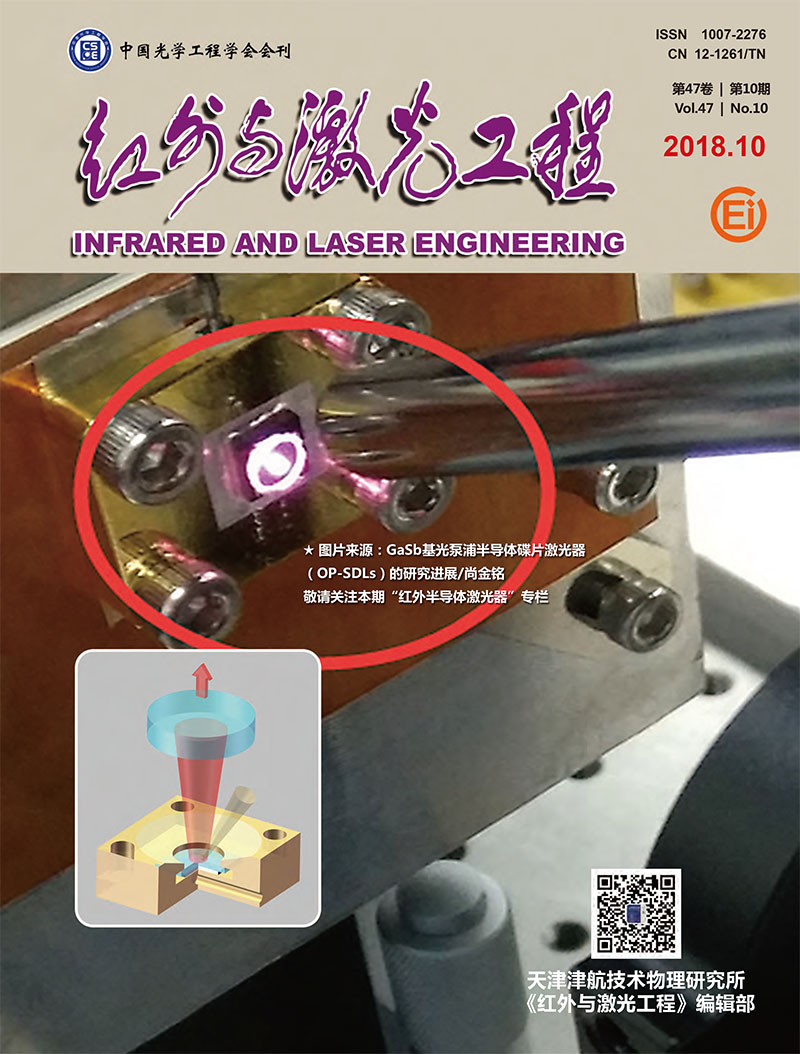|
[1]
|
Liu Hongxia. Preparation and spectral characteristics of electromagnetic attenuation microbial materials[D]. Hefei:University of Science and Technology of China,2015. (in Chinese)刘红霞.电磁衰减微生物材料的制备和光谱特性研究[D].合肥:中国科学技术大学, 2015. |
|
[2]
|
Huang Chaojun, Wu Zhensen, Liu Yafeng. Scattering characteristics of aerosol aggregation particles of 1.06m laser[J]. Infrared and Laser Engineering, 2013, 42(9):2353-2357. (in Chinese)黄朝军, 吴振森, 刘亚锋. 1.06m激光气溶胶凝聚粒子散射特性[J]. 红外与激光工程, 2013, 42(9):2353-2357. |
|
[3]
|
Wang Hongxia, Zhu Youzhang, Ma Jin, et al. Study in the infrared extinction properties of nano-graphite aggregates[J]. Journal of Functional Materials, 2011, 42(4):616-618. (in Chinese)王红霞, 竹有章, 马进, 等. 纳米石墨凝聚粒子红外消光特性研究[J]. 功能材料, 2011, 42(4):616-618. |
|
[4]
|
Wu Y, Cheng T, Zheng L, et al. A study of optical properties of soot aggregates composed of poly-disperse monomers using the superposition T-matrix method[J]. Aerosol Science and Technology, 2015, 49(10):941-949. |
|
[5]
|
Wu Y, Cheng T, Zheng L, et al. Effect of morphology on the optical properties of soot aggregated with spheroidal monomers[J]. Journal of Quantitative Spectroscopy Radiative Transfer, 2016, 168:158-169. |
|
[6]
|
Min M, Rab C, Woitke P, et al. Multiwavelength optical properties of compact dust aggregates in protoplanetary disks[J]. Astronomy Astrophysics,2015, 585:26048. |
|
[7]
|
Lin Li. Morphological characterization of particles and aggregates and scattering properties simulation[D]. Harbin:Harbin Institute of Technology, 2013. (in Chinese)林莉. 粒子及其聚集体形貌表征和散射特性模拟[D]. 哈尔滨:哈尔滨工业大学, 2013. |
|
[8]
|
Moskalensky A E, Strokotov D I, Chernyshev A V, et al. Additivity of light-scattering patterns of aggregated biological particles[J]. Journal of Biomedical Optics,2014, 19(8):85004. |
|
[9]
|
Zhao Xinying, Hu Yihua, Gu Youlin, et al. Transmittance of laser in the microorganism aggregated particle swarm[J]. Acta Optica Sinica, 2015, 35(6):0616001. (in Chinese)赵欣颖, 胡以华, 顾有林, 等.微生物凝聚粒子群的激光透射率研究[J]. 光学学报, 2015, 35(6):0616001. |
|
[10]
|
Karsten Schmidt, Jochen Wauer. Scattering database or spheroidal particles[J]. Applied Optics, 2009, 48(11):2154-2164. |
|
[11]
|
Yang P, Liou K N, Wyser K, et al. Parameterization of the scattering and absorption properties of individual ice crystals[J]. Journal of Geophysical Research Atmospheres, 2000, 105(D4):4699-4718. |
|
[12]
|
Gedney S D. An anisotropic perfectly matched layer absorbing medium for the truncation of FDTD lattices[J]. Antennas and Propagation, IEEE Transactions on,1996, 44(12):1630-1639. |
|
[13]
|
Hannakaisa Lindqvist. Light scattering by coated Gaussian and aggregate particles[J]. Journal of Quantitative Spectroscopy and Radiative Transfer,2009, 110(9-11):262-273. |
|
[14]
|
Liu Jianbin, Zeng Yingxin, Yang Chuping. Light scattering study of biological cells with the discrete dipole approximation[J]. Infrared and Laser Engineering, 2014, 43(7):2204-2208. (in Chinese)刘建斌, 曾应新, 杨初平. 基于离散偶极子近似生物细胞光散射研究[J]. 红外与激光工程, 2014, 43(7):2204-2208. |
|
[15]
|
Honeyager R, Liu G, Nowell H. Voronoi diagram-based spheroid model for microwave scattering of complex snow aggregates[J]. Journal of Quantitative Spectroscopy Radiative Transfer, 2015, 170:28-44. |
|
[16]
|
Sun Xianming. Study on wave propagation and scattering characteristics of atmospheric discrete random media[D]. Xi'an:Xidian University, 2007. |
|
[17]
|
Li C, Xiong H. 3D simulation of the cluster-cluster aggregation model[J]. Computer Physics Communications, 2014, 185(12):3424-3429. |
|
[18]
|
Karageorgiou V, Kaplan D. Porosity of 3D biomaterial scaffolds and osteogenesis[J]. Biomaterials, 2005, 26(27):5474-5491. |
|
[19]
|
Kozasa T, Blum J, Mukai T. Optical properties of dust aggregates[J]. Astronomy and Astrophysics, 1992, 263(1-2):423-432. |
|
[20]
|
Draine B T. User Guide for the Discrete Dipole Approximation Code DDSCAT 7.3[Z]. |









 DownLoad:
DownLoad: